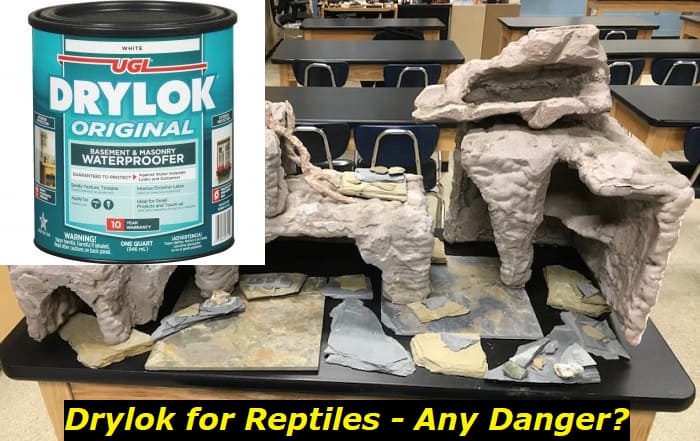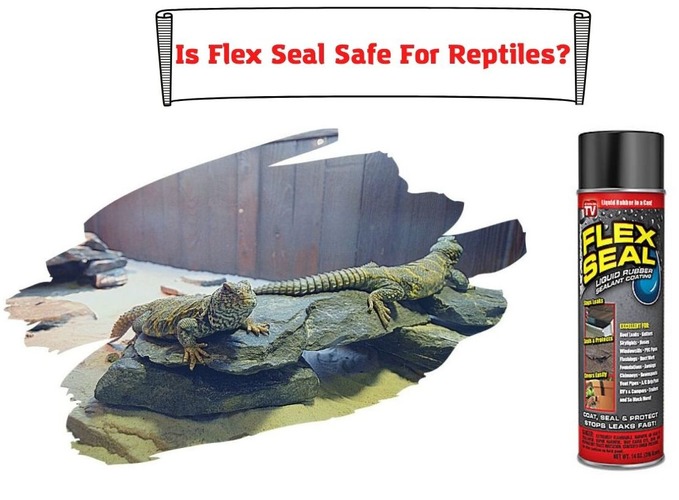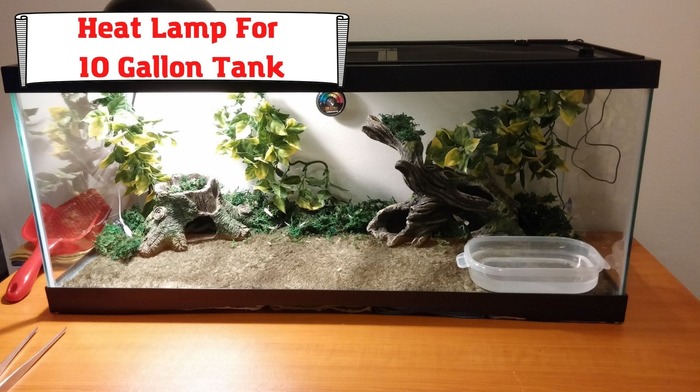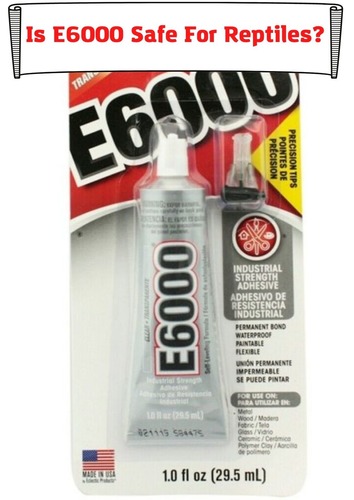Drylok is a sealant that was originally made for masonry work. This is why many workers of home improvement businesses are often shocked when they hear what great things reptile owners do with the product.
There are so many ways to use this sealant in the enclosure. You can use it as a sealant in the interior of the enclosure or as a thick coat for your fake rocks.
The question, however, is whether there are any considerations and warnings to be aware of as reptile owners explore the benefits of this product. Check this article out to find out.

Drylock for Reptile Enclosure
Although the choice to use Drylok and how reptile owners use them in the enclosure depends on the type of reptile they keep; there are many ways to use Drylok in your reptile enclosure.
The way to use Drylok for low-activity reptiles like arboreal snakes will differ from how to use Drylok for crawlers with sharp claws. But the most common way reptile owners use Drylok is for coating artificial rocks.
Many reptile owners do not rely on Drylok alone. They will always coat their high-density foams with Gorila glue before running about three to four coats of Drylok. And in many other instances, they prefer epoxy to Drylok for active and sharp-clawed reptiles.
However, Drylok is a great building material for reptile enclosures. Many reptile owners use it not only for coating fake rocks but also for other uses like moisture-resistant sealants.
Since this product has been in use for a while, what are some considerations to keep in mind before using Drylok?
Any Considerations?
When using Drylok or deciding to use Drylok, there are several considerations to keep in mind to guide your choices and help you make the best and most informed decisions for you and your pet.
Some of the things to consider to put in mind include the following:
The Type of Reptile You Keep
Considering the type of reptiles that you keep is perhaps one of the most important factors to consider.
You want to pay attention to the needs of your reptiles. If you are keeping arboreal snakes or other low-activity reptiles, it would be best to steer clear of Drylok. This is important because Drylok original usually has a rough texture. It has a somewhat grainy texture compared to 100/150 grit sandpaper.
This could lead to bodily injuries as your snake repeated scratches its body on the rough surface to move. Remember that broken skin is an invitation to viruses and bacteria, and this can lead to more lethal consequences.
Some may think that the best way to tackle this downside is to sand the cured surface. But if you do, that would make the whole project a waste because you would be sanding away the protective surface you want to build. It would be best to use epoxy or other less problematic protective sealants that are safe for reptiles.
But if you keep reptiles like crawlers, a rough surface would be great as it will give them a surface they can grab when they climb.
Durability
The durability of the enclosure is another important factor to consider. Drylok works great with foam sculpture for some reason. Key among them is its thickness. It can fill the cracks between the layers to cover all the small crevices in the carved rocks.
From experience, many reptile owners and DIYers report that it is best to start with a very thin coat and finish with no less than two thicker coats for best results, especially if you are working with a plywood enclosure.
If you are working on a foam sculpture, it would be best to sand the foam for a smooth surface before applying the Drylok. This will ensure that you get the best result.
Ease of Maintenance
Cleaning your reptile enclosure is a sacred duty, especially if you want to be a responsible pet owner. A dirty enclosure is one of the surest ways to make your pet susceptible to diseases. But cleaning and maintenance can be a problem if the building materials you use to build the enclosure make cleaning and maintenance too cumbersome.
Many reptile owners do not fully recommend Drylok because it can be difficult to clean sometimes. You will need specific kinds of brushes to brush clean fecal matter and other contaminants from the enclosure.
It would be best to look up other sealants that can be easier maintained if you are not up for the stress that Drylok entails.
Color
An excellent reptile enclosure mimics the critter’s natural environment. But Drylok comes in grey and white, which can be a problem for the reptile owner. This may be great for your rocks, but if you wish to change the colors, you can.
When you buy your Drylok original, take it to a local paint store where they do interior and exterior painting and tell them you’d like to tint the color of your Drylok.
You can tint it to grey, buttercup, blue, beige, mint green, platinum, sand, slate blue, and even soft pink. If you also want different colors of coats on the inside, they can give you options.
Any Warning?
Yes, there are some things to keep in mind if you decide to use Drylok. Making a wrong move can expose your pet to the dangers of injuries or other serious health challenges.
Toxicity
The toxicity of the Drylok Extreme is the main point here. Many people on the internet have differing opinions about Drylok Extreme. Some argue that it is safe for life, especially after it has been cured, while many others argue that it should be avoided altogether.
It is important to understand that Drylok Extreme contains chemicals that prevent mold. These chemicals are precisely what makes Drylok Extreme dangerous for a reptile enclosure. This is where Drylok Original differs. It does not have anti-mold additives.
The reason some people are of the opinion that you can use it in a reptile enclosure is that Drylok Extreme is technically VOC compliant. But this only makes it safe for human use. Critical scrutiny of the data sheet reveals that the Drylok Extreme is a “Low odor” sealant. What you want for your reptile is an odor-free sealant. It would be unwise to use Drylok Extreme for an enclosed space.
The recommendation of the manufacturer that Drylok Original should be used in place of Drylok Extreme for fish ponds is also evidence of how unsafe the Drylok Extreme is for reptiles. The tech data sheet also says clearly that the Drylok Extreme is toxic to aquatic life.
Typically, Drylok is mostly used by Dart frog owners. These amphibians share a lot with reptiles, but more importantly, they are very susceptible to chemical contamination because they absorb substances with their skin.
Dart frog owners prefer the Drylok Original to the Drylok Extreme because the Drylok Extreme has some volatile organic compounds, unlike the Drylok original. This can mean health challenges for the reptiles.
The same applies to reptiles. It would be best to stick with the Drylok original, even though the Drylok Extreme will cure and let out a great percentage of its volatile organic compounds.
Bodily Injury
It is important to understand that Drylok Original has a rough surface after it has cured. If you want to use it for your enclosure, as mentioned above, you want to ensure that the pet to be housed in the enclosure is not one that can sustain bodily injuries from the abrasions with the rough surface.
Although Drylok will be okay for your clawed reptiles because they mostly walk with their bodies off the ground, you want to reduce the chances of bodily injuries by lightly sanding between coats. You do not want to sand it too much. Only lightly as you still want to retain the moisture-proof properties.
Another great way to manage this risk is to sand the Drylok on the normal walking routes and basking areas with 220 grit. Your goal should be to tone down the rough surface and not to take out the Drylok sealant.
Bottom Line
Drylok has always been a great sealant in the reptile-keeping hobby for many reasons. It is a great moisture-repellent sealant for an enclosure, especially for the side walls of a big enclosure. It also works great for covering fake rocks.
The benefits are numerous. They include durability, color versatility, and more. But there are some warnings you want to keep in mind as you use this sealing product for your enclosure.
Perhaps the most important is to stay away from Drylok Extreme and choose Drylok Original instead. This is for the safety of the pet. Although many reptile owners have built ventilation in their enclosures to reduce the hazards of the low-odor Drylok Extreme, prevention is better than cure.
- Dubia Roach Egg Sack: How To Understand if It’s Healthy? - January 2, 2023
- How To Feed African Dwarf Frog While on Vacation? - December 26, 2022
- Baytril for Bearded Dragon: Here’s What You Should Know - December 19, 2022



